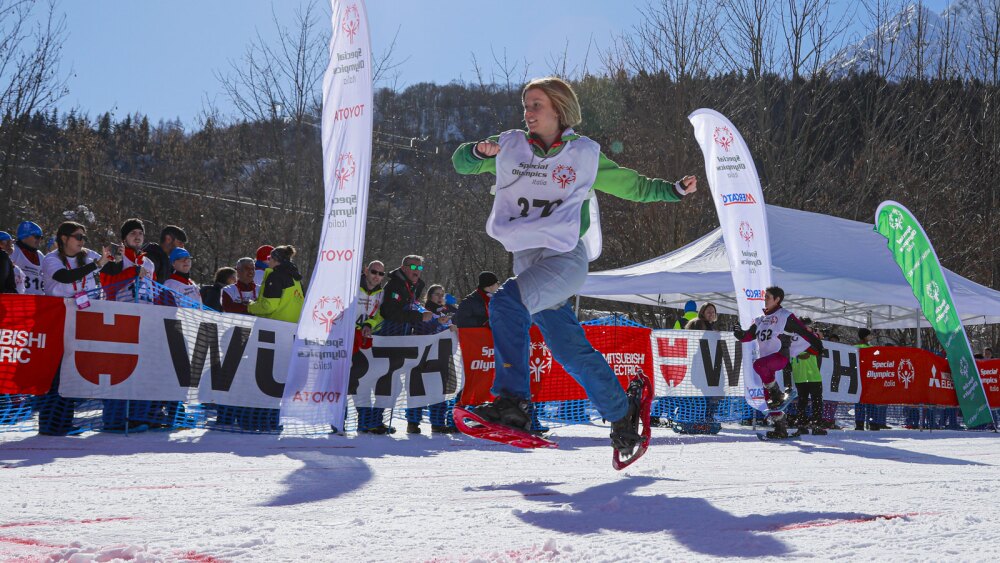Snowshoeing is a form of running practiced on snow using snowshoes, which are devices worn on the feet to walk or run on snowy surfaces without sinking.
Types of Races:
- Short distances such as 25, 50, and 100 meters for beginners or those who prefer quicker races.
- Medium distances like 200, 400, and 800 meters for athletes with moderate endurance.
- Relay races where team members take turns completing the total distance.
Divisioning
One of the fundamental aspects of Special Olympics is “divisioning,” a process that groups athletes based on gender, age, and ability. This system ensures balanced and fair competitions, allowing each athlete to compete against opponents with similar abilities.
Training and Preparation
Special Olympics athletes participate in structured training programs, supervised by qualified coaches. These programs focus on developing technical skills, physical endurance, and understanding the rules of the sport. The training is tailored to meet the individual needs of the athletes to maximize their potential.
Support and Integration
Special Olympics events are supported by a network of volunteers, coaches, family members, and friends. This support creates a positive and inclusive environment where participants can grow athletes and as individuals.
Values and Goals
Special Olympics is not limited to competition. It promotes fundamental values such as:
- Inclusion: Every athlete, regardless of ability level, has the opportunity to participate and compete.
- Respect: Athletes are encouraged to respect themselves, their teammates, opponents, and the rules of the sport.
- Determination: Athletes learn to overcome challenges and continually improve.
- Joy: The sports experience is also a celebration of fun and personal satisfaction.













